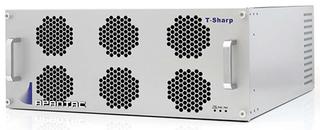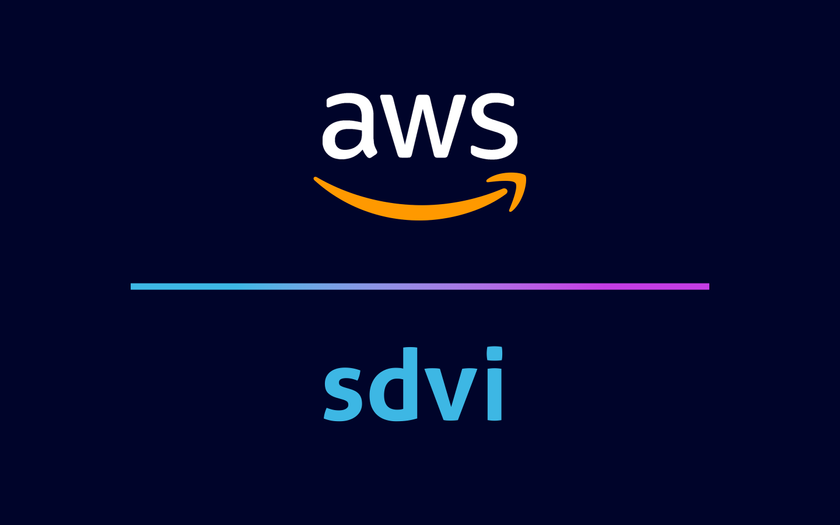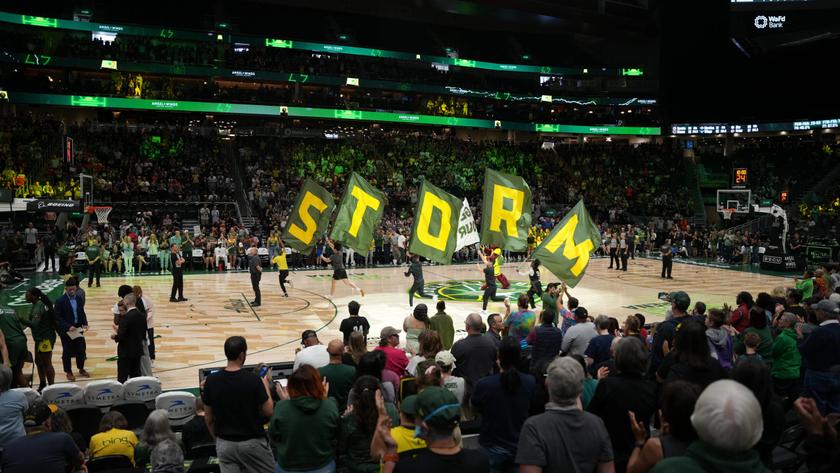Multiviewers Address Remote Possibilities

At this year’s NAB Show, Apantac introduced its T# multiviewer, which features a “virtual-matrix”- type operation.
ALEXANDRIA, VA.—Remote production presents added challenges, especially where space is often at premium. Outside of the master control environment, whether on a truck or at remote facility, issues such as power consumption, heat and access to devices need to be overcome. In these situations multiviewers need to be compact yet still offer specific features for today’s increasingly demanding clients.
“Video and audio monitoring has never been more challenging due to the need to deliver increasingly large quantities of content in multiple formats, on multiple devices, at any given time,” said Martin Jolicoeur, product manager for Grass Valley. “In the truck environment, multiviewers have replaced the walls of CRT displays with flat panel monitors. This has reduced the weight and power consumption, which are two important factors to consider in trucks.”
Moreover multiviewers need to be able to tackle the different requirements presented by truck owners.
“Some want to use four displays and split these, and that is very different from a fixed MC with many sources on the same screen,” added Jolicoeur. “One other challenge of mobile production remains that everything may have to be laid out for each specific event, and needs to be reconfigured on the fly. Multiviewers give the production team the ability to do this.”
INCREASED OPPORTUNITIES
Despite such challenges, remote production is a growing market for next generation multiviewers.
“We have a big play already in the live and remote production market,” said Robert Millis, senior product manager of measurement and monitoring products at Imagine Communications in Dallas. “That is a big market, but one with big challenges as it often involves interfacing with a lot of third party platforms.”
The multiviewers used in these remote productions must be able to help the users isolate streams as issues occur, while allowing the engineer to address any issues while the rest of the channels “just tick along,” according to Millis.
Multiviewers are also adding new ways for content creators to increase revenue streams, as the various content feeds can be sent out to other channels or used in alternative delivery methods such as webbased content.
“Multiviewing can also be a way to increase the opportunities to monetize and distribute the content,” Millis suggested. “People crave the experience they are getting from a multiview product.”
SIZE STILL MATTERS

TNDV’s Aspiration mobile production unit includes an Imagine Communications multiviewer.
With space at a premium, every device that is crammed into remote truck rack space has to be smaller and lighter and produce less heat. The result has been a split in the types of mutliviewers that are being introduced to the industry.
On the one end of the spectrum there has been an influx of low-end products that fill the need of “if you can see it is plenty good.”
However, at the other end of the spectrum are the high-end products that offer advanced features including color comparison, embedded audio and greater resolution that allows for greater splits on a display.
“We’re seeing a lot of trucks utilizing 55-inch panels that have a number of quad splits,” said Thomas Tang, president of Apantac, a Portland, Ore.-based provider of multiviewer systems. The company has introduced a multiviewer that allows a single input to be replicated multiple times. The Cascadable Quad-Split: OG-MiniQ offers low power consumption of just 15W, can handle 40 inputs on a single openGear frame and features simultaneous HDMI/DVI and SDI outputs.
At this year’s NAB Show, Apantac introduced its T# multiviewer, which features a “virtual-matrix”-type operation. Size across the platform is still one of the biggest considerations. “For trucks the multiviewer needs to be smaller, cooler and use less energy,” he said.
At the same time, the multiviewer can provide a plethora of images on today’s flat panel displays, and because each image is reduced in size there is now an added benefit, according to Tang. “The resolution is actually much better on a smaller monitor,” he said. “The nature of the technology is just that way.”
4K AND IP
While space in a truck may be limited, larger 4K panels may actually solve some of the inherent problems because fewer panels may be needed. This is one of the two main technology drivers in the multiviewer space today.
“With the advent of these large flat screens that can be 85-inches or more it simply doesn’t make sense to have multiple CRT monitors,” said Alan Smith, product manager at Quantel Snell. “It gives you total flexibility, plus, if you are producing in 4K, you want to be able to monitor in 4K.”
The move to 4K/UHD could also lead the way to new interfaces between devices including the multiviewer.
“4K is providing better resolution and color depth,” noted Millis. “There will also be a bigger canvas as well, but we’re seeing integration of the consumer interfaces including Display Port 1.2 and HDMI 4.0. 4K/UHD, which will be more closely wired between the multiviewer and the end display.”
While the mobile environment is still primarily baseband, a steady shift to IP can address issues of scalability while also ensuring that content can be delivered for on-air broadcast as well as streaming end-products via the Web or to mobile devices.
To accommodate the ever-changing requirements presented by IP, Glass Valley has introduced what it has dubbed the industry’s first “Glass-to-Glass” IP solution, which offers video-over-IP connectivity (SMPTE 2022-6), spanning cameras, routing, gateways, plus control and monitoring.
“In mobile production the environment is still baseband centric,” said Jolicoeur. “IP is starting to happen in mobile and at NAB we introduced an IP flavor to our ‘Glass-to-Glass’ solution for use in trucks.”
The use of IP for multiviewers has “massive potential for the future,” said Quantel Snell’s Smith. “This is something we have been working on with our multiviewers. We are looking at IP routing and how the multiviewerstory will tie in with that in the mobile/truck space.”
Get the TV Tech Newsletter
The professional video industry's #1 source for news, trends and product and tech information. Sign up below.













